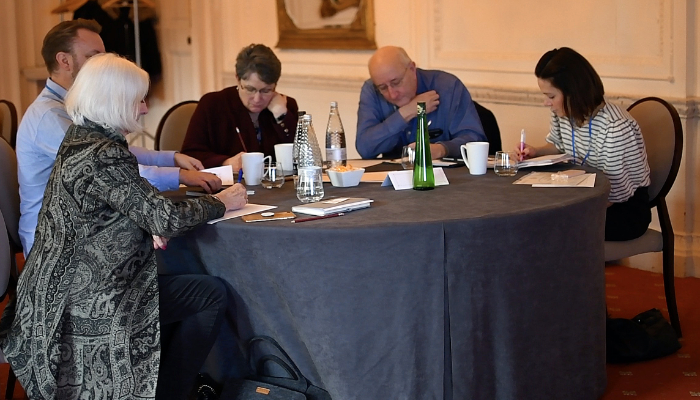What have you done in the way of personal or professional development in the past two years? Unless you’re in charge of your own budget and you’ve been motivated to learn, the answer to that question might be ‘not very much’.
Most organisations have been principally focused on coping with each fresh wave of change during the pandemic. Energy has gone into figuring out how people can work at home, who can’t work at home, how to serve customers who are working at home, how to manage a drop in income and much more. In most cases, it’s been simply a matter of staying afloat – improving skills and effectiveness has not been top of the agenda.
As a result, lots of companies have a backlog of development activities to tackle. Whether that’s in-depth onboarding of new workers, training in how to operate as a team in virtual environments or leadership skills for those with the unenviable task of navigating this ‘new normal’, it’s mostly been put on hold. Some have focused on the skills needed to operate in a virtual world or how to manage the stress of lockdown. Others are bravely tackling the challenge of translating traditional training programmes into e-learning experiences or ‘live on-line’ learning. Who’s to say which is the right approach?
And why does it matter? In the year of ‘the Great Resignation’ do you really want to be investing in staff who might resign tomorrow? Well, yes, probably. Because the opportunity to learn new skills and make progress in a career might be one of the reasons your people decide to stay.
Where is your company in relation to developing people? I suggest there are five levels of operation here. Check out the levels and plot your organisation’s location and the extent of the backlog of development activities.
Level One
At Level One we find the companies that didn’t invest in the development of their people before the pandemic. They haven’t invested during the pandemic and they’re probably not going to invest in developing people any time in the future either. You can’t really say there is a backlog of development activities, because the norm here is to do nothing.
Companies with this attitude are a bit like passengers on the Titanic – oblivious to the dangers ahead and to their responsibilities to others. If you work for one of these organisations, you need a Plan B.
Level Two
At Level Two we find the companies that realised they couldn’t carry on with the development activities they used to rely on prior to the pandemic. So, they stopped everything. They don’t want to invest in new technology or new methods until they’re sure it’s really necessary. They also don’t want to train staff they might have to lose later. They will do some development, they’re just not sure what. Or when. Or for whom.
For now, they’re not doing any development activities. They may even have lost the L&D professionals they used to rely on. There is a clear backlog of development activities and it’s probably hampering the progress of talented staff and undermining the HR strategy.
To carry on the Titanic metaphor, companies at this level are like the crew member who see the iceberg from afar and hopes it won’t hit them…
Level Three
At Level Three are the companies where there is some development going on. People are grabbing at whatever learning they can get, to help cope with their current problems. This might mean individuals are looking up advice on YouTube, swapping self-help books and consulting their friends and network. Occasionally someone might put together a group event. It’s keeping them going, but it’s no long-term strategy. In fact, it’s more like a shipwreck! It’s every person for themselves and there’s no shared plan or vision. As long as we get through the day…
Strategic plans for talent development and succession planning have sunk without trace. People are simultaneously bored with their work and fighting for their jobs. There is a backlog of training to be conducted and a dearth of clear needs analysis. Senior leaders may be working at home, secure in the illusion that everyone else is as comfortable as they are.
Level Four
At Level Four, we have the semblance of a development plan. It may include hastily-adapted versions of established training programmes being run online. It may rely too much on a small number of trainers and coaches to figure out how to make it all happen, but there’s learning going on and it’s relevant to the needs, not just of the individual but also the business as a whole.
Also at this level, we might find that the plan being followed hasn’t fully embraced the new reality in which we’re all working. It might have a few gaps or some determined hanging on to old ideas. There may be people who aren’t fully engaged with the goals being pursued. You may even see a bit of concerted effort to pull back and think again.
There is a backlog of training to be delivered and possibly also a backlog in terms of strategic thinking about development and no clear plan for the future.
This is a bit like being in the lifeboat. You’re still breathing, you’re even heading in the right direction, but it’s uncomfortable and cold.
Level Five
At Level Five are the companies that have a people development plan that supports the business plan. They know the skills and culture they must support if they are to fulfil their mission and continue to succeed in their chosen markets. In an uncertain world, they understand the power of a shared purpose and a declared mission.
Individuals have clear development plans and are enthusiastic about the opportunity to learn and to step up to meet the challenges on the path ahead. In fact, they’re learning the skills of adapting to whatever shows up because they know that change is not only a constant factor, it’s also accelerating. There is no backlog of learning to address, just a set of development plans to carry out. Leaders are supporting their people on a journey of discovery that creates value for employees and customers alike.
These companies are cruising ‘full steam ahead’.
It might be immediately clear to you where your organisation is currently operating. Or you may have to study the levels and look a round you a bit. Either way, I hope this helps you figure out whether everything is ‘shipshape’ or if there’s work to be done.
If you’d like to have an exploratory call to discuss the development needs for your team (or for yourself) please get in touch.






